5 unmissable stages of the 2024 Tour de France
Mountains, gravel, and final-day drama: Here are our pick of the most promising stages of next year's Tour
Patrick Fletcher
Deputy Editor
© Velo Collection (TDW) / Getty Images
The fearsome Col du Galibier appears shockingly early in the 2024 Tour de France
The 2024 Tour de France is a thrill-seeker, seeking to capture the increasingly elusive attention of as broad an audience as possible. We have mountains at the start, mountains at the end, and gravel in the middle. We have the hilliest ever opening stage and we have a real race on the final day for the first time in 35 years.
In short, we have plenty of ammo for this run-down of 'unmissable' stages.
The 2024 Tour de France will, of course, be live in full on GCN+ and while you may well watch every stage from start to finish, these for us are the standout days when you're going to want to clear your calendars.
Stage 4: Why take a tunnel when you can climb a col?
July 2: Pinerolo – Valloire, 138km
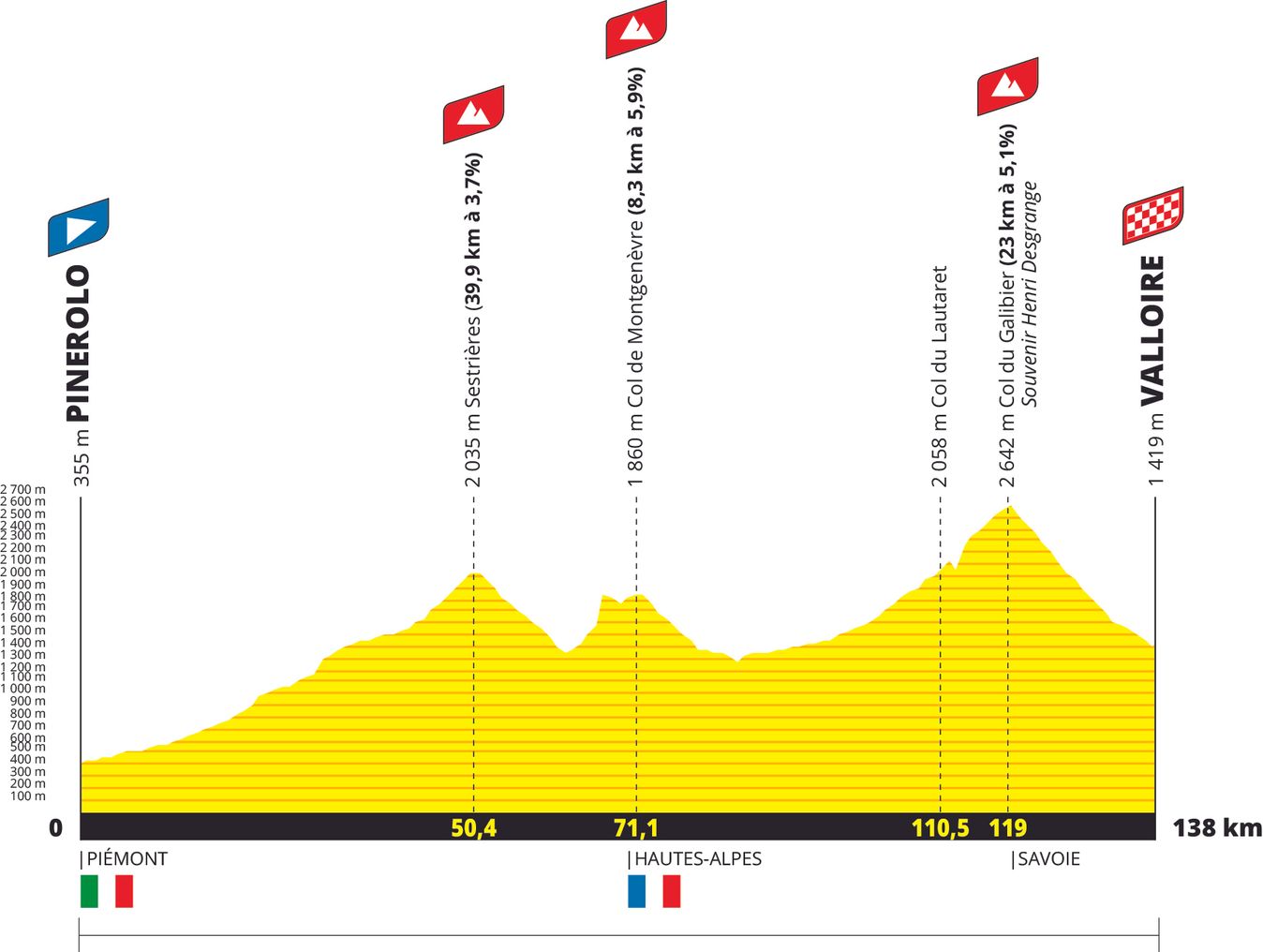
© ASO
The profile for stage 4 of the 2024 Tour de France
“Never before has the Tour been so high, so soon,” said Christian Prudhomme as he unveiled this early foray into the Alps. We knew the race had to get from Italy to France, and that means negotiating the Alps, but doing so in this way was not on many bingo cards.
“We could have passed through some tunnels, but we had no interest in doing that, so we preferred to pass over some cols,” Prudhomme added with a mischievous smile.
This is a proper mountain stage, and even if you look at it and think it’s not the likeliest to generate decisive general classification movement, you then remember it’s only stage 4 and that this sort of thing isn’t supposed to happen this early in a Grand Tour.
A full on mountain stage this early is unprecedented, but it's not the first time the Tour has started with some hills. In some respects the first few stages of this Tour are a natural step up from what we saw last year. We have more elevation gain on the opening day in 2024 (3,600m) than we did in the Basque Country last year, when an early foray into the Pyrenees on stages 5 and 6 – on routes that didn’t look ultra-decisive – ended up seeing Vingegaard and Pogačar trade significant blows.
The same is possible on this route, which effectively climbs from the gun, all the way to Sestrières at 2035m. The race crosses the Italo-French border via the Col de Montgenèvre (8.3km at 5.9%) and then it’s time for the Galibier, one of the most iconic mountains of the Tour de France.
It's the southern side of the mountain in action here, totalling 23km at 5.1%, much of that being a steady plod up the Col du Lauteret, where the prevailing headwind could see a contained race. But things suddenly change when you ignore that left turn and head right onto the upper reaches of the Galibier, as the gradient ramps up dramatically, the mountainside vertiginously falls away, and the altitude starts to bite.
This will be as much about the descent as the ascent, with the route re-tracing the steps that made Tom Pidcock a Netflix star, so we’re in for a spectacular finale, however the Galibier leaves it hanging. The draggy nature of much of the climbing may fail to inspire some fans, but you have a Tour de France icon, altitude, and a stunning descent, and then you remember it’s only stage 4.
Stage 9: Gravel storm incoming
July 7: Troyes – Troyes, 199km
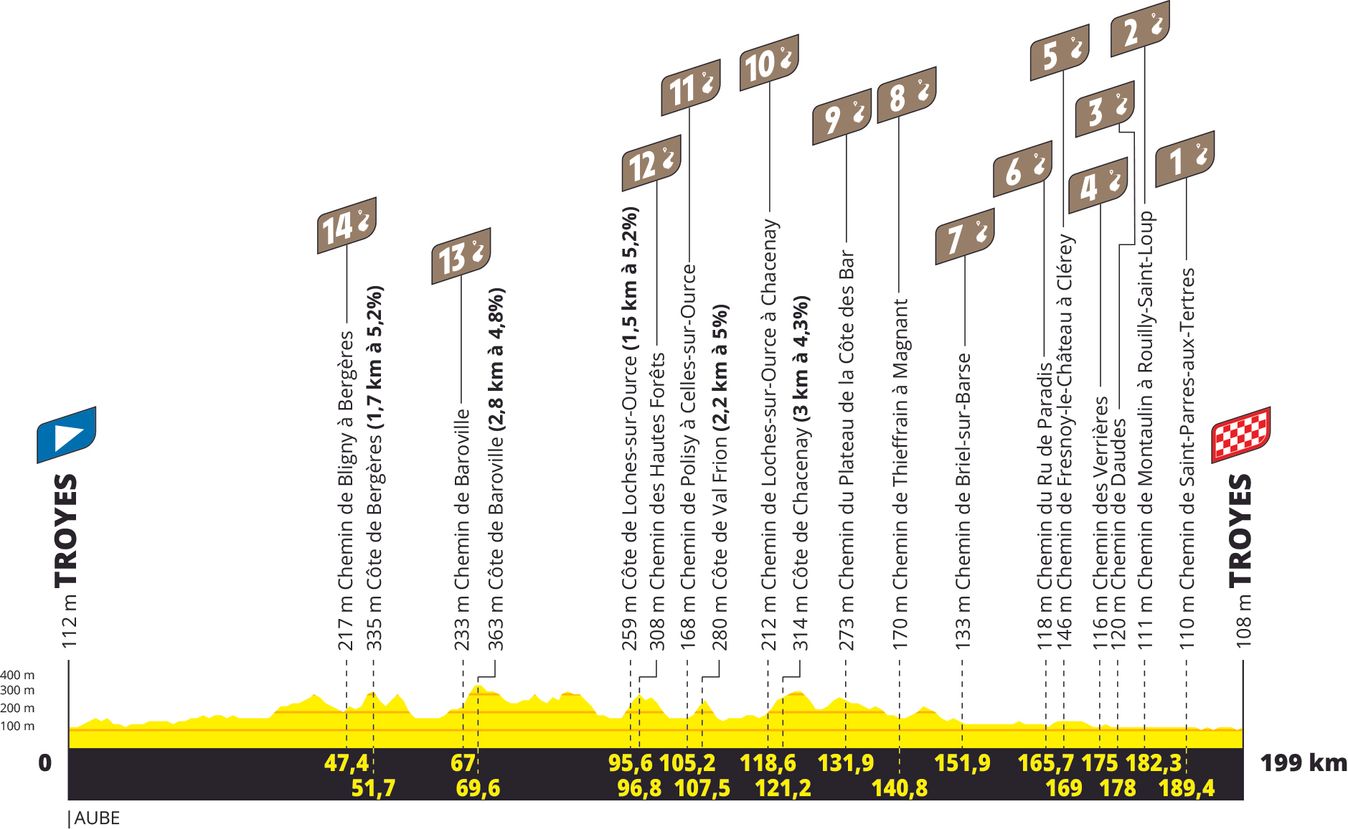
© ASO
The profile for stage 9 of the 2024 Tour de France
Love gravel, hate gravel, you are not missing this. This could be a massive moment for the race; it could be a massive moment in the history of the Tour de France; it could amount to very little at all; but it’s going to be captivating viewing, either way.
There was a sense of shock after Christian Prudhomme had unveiled the parcours for this stage. The very presence of gravel had been heavily touted in the pre-presentation rumour mill, but, sorry… how much?! No fewer than 14 sectors will line the route of stage 9, totalling more than 32km of the so-called chemins blancs (white tracks). That’s not Strade Bianche territory, but it’s considerably more than the 12.9km used when the Tour de France Femmes visited this area in 2022, the 11.6km on offer at next year’s Giro d’Italia, and any helping of cobblestone sectors we’ve had over the years.
It’s going to kick up a storm of dust on the day but it has already whipped up a stormy debate. “It is not necessary,” said an exasperated Jumbo-Visma boss Richard Plugge, a feeling echoed by his Bora-Hansgrohe counterpart Ralph Denk and in more diplomatic terms by his rider, the defending champion Jonas Vingegaard. Remco Evenepoel has already spoken out against the gravel, while his Soudal Quick-Step boss Patrick Lefevere has never hidden his own distaste for gravel and cobbles.
The general argument against is that the heightened risk of mechanical problems or crashes could take a leading contender out of contention or out of the race altogether – rather than being decided on strength and tactics, it increased the role of Lady Luck. The argument in favour draws on both the past and future of cycling. Prudhomme pointed out that some of the sport’s legends were making their mark before long before paved roads were the norm, while gravel as a modern discipline is the sport's major growth area.
The Tour de France has made obvious efforts in recent years to appeal to the social media generation, so it’s no surprise to see them jump on the gravel hype train. If nothing goes drastically wrong on stage 9 next July, we can expect to see them lean further into the drama and entertainment angle, with Tour routes veering further away from the traditional. This is part of the testing ground for how a Grand Tour could and should be designed.
As for the day itself, the luck factor will be impossible to predict but in purely racing terms there is plenty of time to be won and lost. Plugge may have underlined Vingegaard’s bike handling skills, but the Jumbo-Visma reaction doesn’t scream confidence, nor does that of Primož Roglič’s future team Bora-Hansgrohe, while Evenepoel will have flashbacks to his nightmare outing on the Tuscan gravel in the 2021 Giro. That’ll be music to the ears of Tadej Pogačar (UAE Team Emirates), a former winner of Strade Bianche and the reigning champion at the Tour of Flanders. He is, quite simply, a more rugged and rounded rider, and he will surely see this not as an obstacle but an opportunity.
However it falls, the sight of the yellow jersey and co. careering onto the gravel – a haze of dust in the dry, or a mudbath in the wet – will be compelling viewing. Even if nothing much happens, you’ll be holding your breath on the edge of your seat for each sector, but there’s every chance this could be one of the most dramatic days of the whole Tour.
Stage 15: A Bastille Day epic
July 14: Loudenvielle – Plateau de Beille, 198km
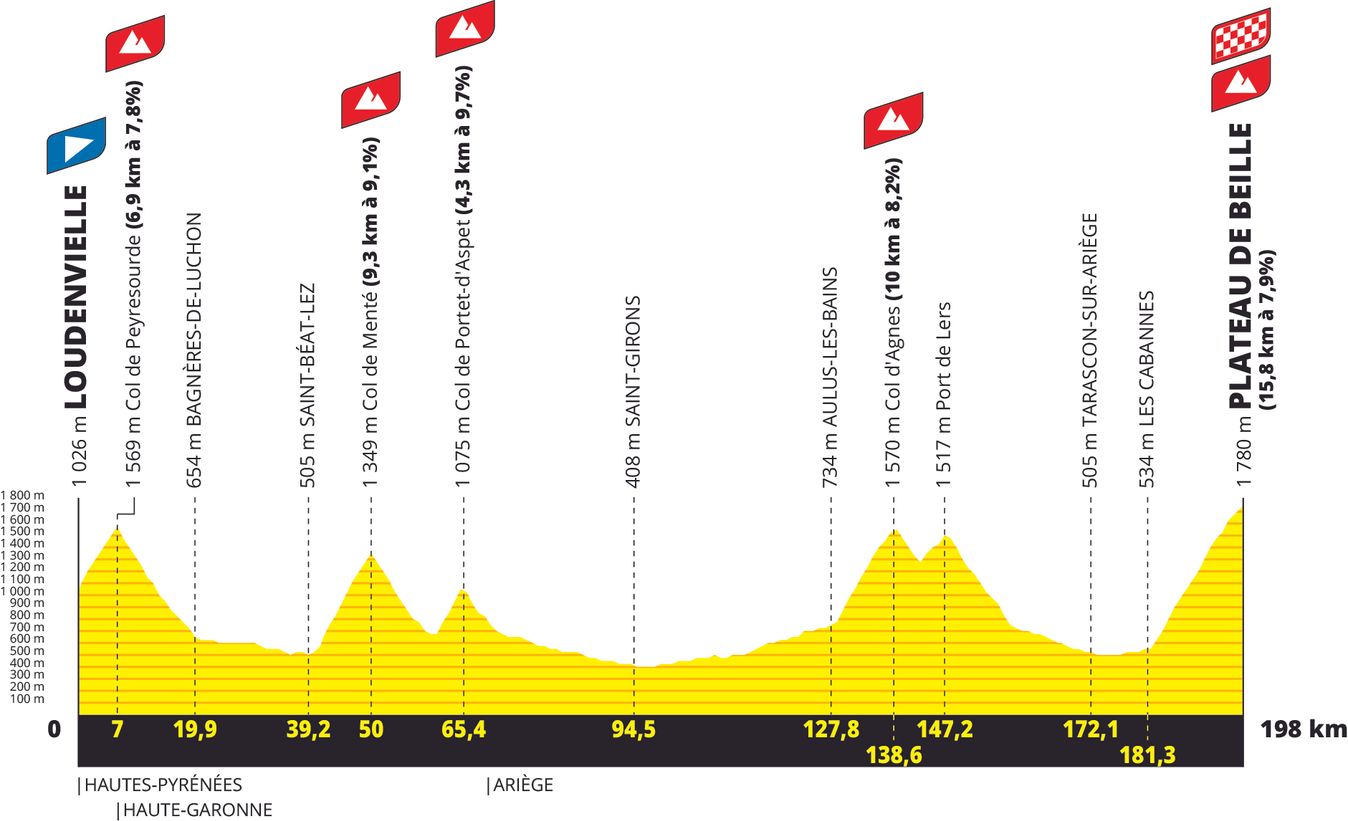
© ASO
The profile for stage 15 of the 2024 Tour de France
Bastille Day, and as if the French fans needed any more incentive to get out there and scream their lungs out, we have a crazy day in the Pyrenees.
Let’s start with the stats: 198km, six climbs, 4850m elevation gain. It’s a big, big day and, what’s more, it comes hot on the heels of another big day. Stage 14 might not be quite as heavy, but it still goes over the Tourmalet, Hourquette d’Ancizan and up Pla d’Adet, meaning the legs will already be dulled for this epic.
It’s another summit finish, up at Plateau de Beille, but more on that later. The stage rips out of the traps, climbing the western flank of the Col de Peyresourde from the gun. The ascent from Loudenvielle measures 6.9km at 7.8% and the bunch is going to explode immediately. Breakaway artists will be on the move, pawns will be placed, lower-rung GC riders will be on the hunt, and we could even see a favourite or two looking to take advantage of the chaos. After the descent there are 20km in the valley but then the Col de Menté hits and it’s vicious (9.3km at 9.1%), followed straight away by the Portet d’Aspet (4.3km at 9.7%).
The valley roads in the middle of the stage should be where things settle back into some sort of pattern, but the shake-up will recommence on the Col d’Agnes (10km at 8.2%), and the short hop over to the Port de Lers. A descent and a short valley stretch then lead to the final climb to Plateau de Beille (15.8km at 7.9%), which didn’t see much action on its last appearance in 2015, but then again this is a harder stage in general. The first few kilometres are the hardest, averaging 9%, and it hangs mostly between 7-8% the rest of the way up. For such a long climb, the average gradient is high, and there’ll be guaranteed damage by the top.
The 2024 Tour route seems to have less of a penchant for super-steep climbs than previous years, with a return to more of the traditional steadier efforts, but this stage features the sharpest gradients of the whole Tour, and also the most elevation gain of a single stage. It’s set to be a defining day.
Stage 19: Up in the clouds
July 19: Embrun – Valloire, 145km
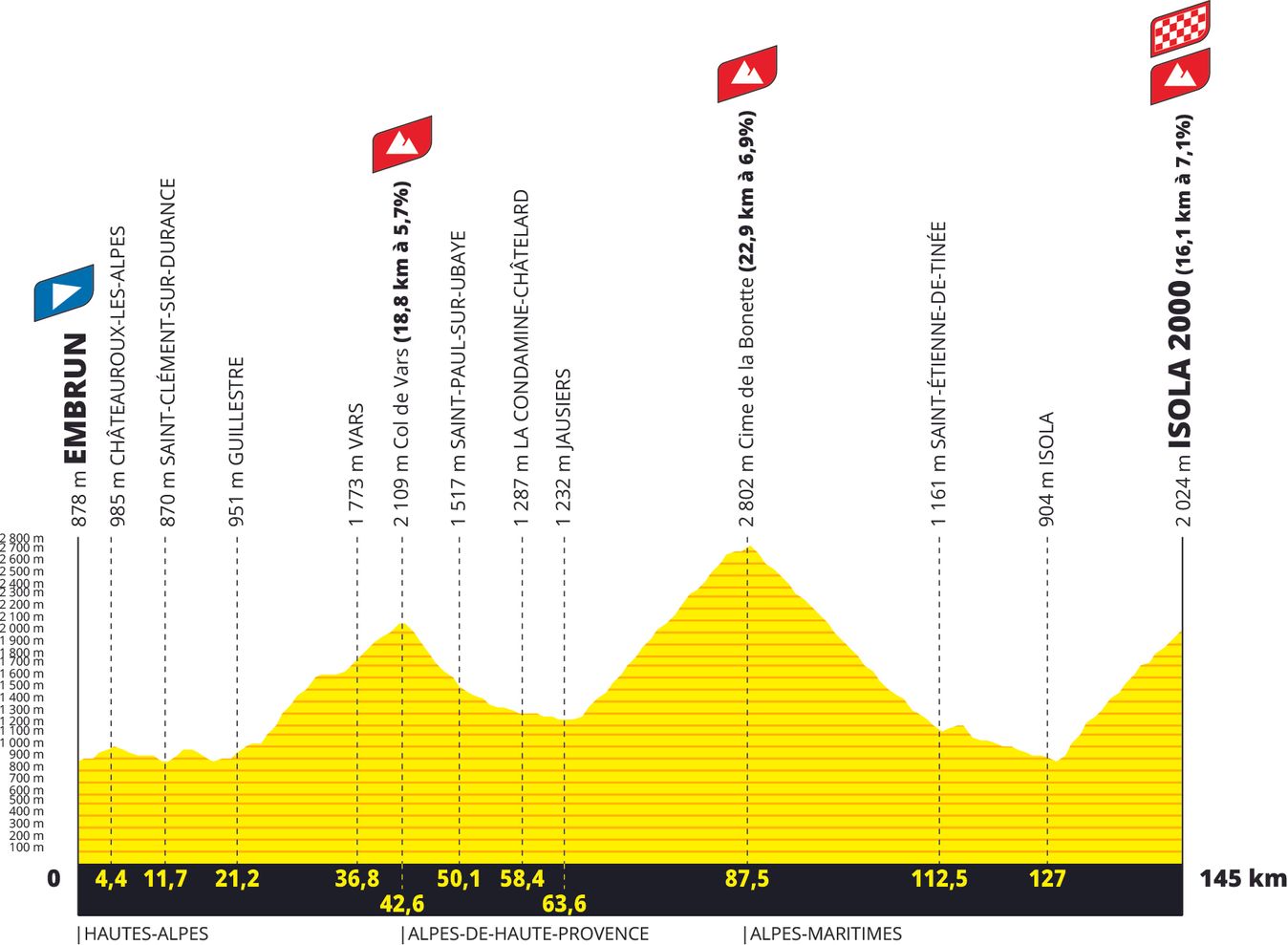
© ASO
The profile for stage 19 of the 2024 Tour de France
Rivalling stage 15 for the honour of the race’s ‘queen stage’ is this trip down the eastern flank of the French Alps, and it offers a real contrast to its Pyrenean counterpart.
For starters, it’s shorter, by 53km, and it contains almost as much elevation gain. Although it doesn’t start uphill, it’s a more intense affair. Secondly, the climbs are less steep, but longer, the Col de Vars and Cime de la Bonette both around the 20km mark.
The most important factor – and the thing that truly sets this stage apart – is the altitude. 2000 metres has become a sort of mythical benchmark, often referred to as 'the barrier'. Above the barrier, things change as the paucity of oxygen dulling both the muscles and the senses. At that height, you can crack and never recover.
The Tour goes above 2000m on the Galibier on stage 4 and the Tourmalet on stage 14, but stage 19 is ‘the altitude stage’ of the 2024 Tour.
The Col de Vars takes us to 2109m with an 18.8km climb at an average gradient of 5.7% that’s heavily mitigated by a 3km plateau in the middle. It’s then over to the Cime de la Bonette, which, at an eye-watering 2802m, is one of the highest paved roads in Europe.
This is extreme altitude, and while the climb, measuring 22.2km at 6.9%, would be hard enough from seal level, half of it is above the 2000m barrier, where the riders will be toiling for more than half an hour.
The long descent to Isola sets us up for another vertical kilometre on the final climb to Isola 2000, which as the name suggests, punctures that 2000m barrier for a third time. It’s another long climb at 16km, and while it’s a steady traditional ski resort seven percent-er, the day’s exertions will start to take their toll.
It’s the sort of stage, heading into the clouds, where the idea of climbers ‘taking flight’ feels very apt indeed.
Stage 21: Drama til the last
July 21: Monaco – Nice, 34km (ITT)

© ASO
The profile for stage 21 of the 2024 Tour de France
For the first time in the history of the Tour de France, the race will finish away from Paris, and for the first time since 1989, we’ll have a competitive final day.
Those memories from 35 years ago will only whet the appetite for this 35km time trial between Nice and Monaco. The final day of that 1989 edition, concluding with a time trial into Paris, is one of the most memorable day’s in the race’s rich tapestry, with a pioneeringly aerodynamic Greg LeMond snatching the yellow jersey from Laurent Fignon by a mere eight seconds – the tightest ever Tour.
The arrival of the peloton in Paris is, for many, symbolic. However, the champagne-fuelled procession is not to everyone’s taste, and those who prefer the last day of the race to be, well, a race, will delight in the 2024 finale on the Côte d’Azur.
Provided it’s not a complete walkover to that point, the yellow jersey will be in play until the very last metres and moments of the Tour de France.
If the yellow jersey is indeed in play, then even the flattest of time trials would be gripping, but this is a far more interesting route than most, heading into the hills behind Nice to provide an all-round test of climbing, descending, flat power, and also bike handling.
The route starts in Monaco and spends all of 3km on the flat before heading up La Turbie, a well-trodden training climb for the enclave of Principality-based pros. At 8.1km at 5.6%, it’s a solid climb but more of a steady, seated effort. It provides a link to the Col d’Eze, famous from Paris-Nice, so it’s not the full climb but a steep 1.6km kicker at the top, which is followed by a long, fast, sweeping descent into Nice for a flat final 6km.
It’s a stunning route, perched above the glistening blue waters of the Mediterranean, and it should balance things finely between the remaining yellow jersey contenders, coming down to who’s still firing after three weeks. That’s another part of the novelty; the 2024 Tour effectively has one extra day of ‘real’ racing, and this TT comes after two big summit finishes, and five mountain stages in the space of the previous seven days.
If it goes down to the wire, it will live long in the memory.
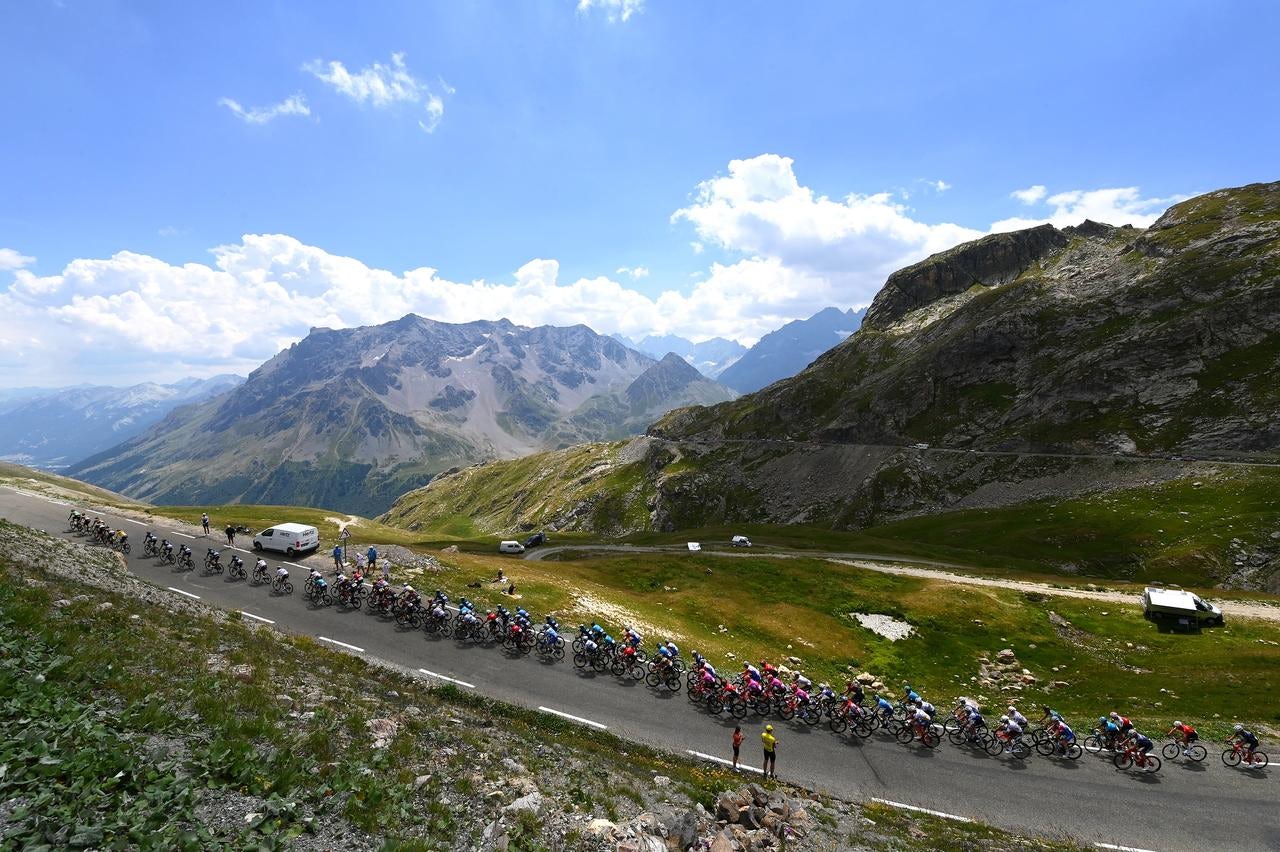
.jpg?w=600&auto=format)








.png?w=600&auto=format)
